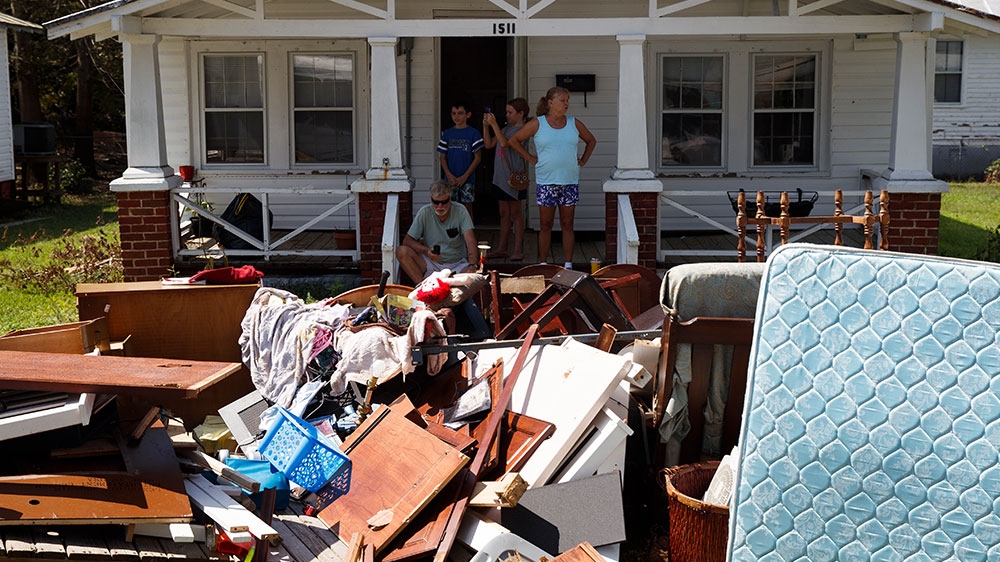Florence: Death toll climbs to 36 as women in sheriff’s van drown
Correction 19/09/2018: A previous version of this article misstated the name of North Carolina’s governor. It has been corrected to state Roy Cooper is the state’s current governor.
Two women died when a sheriff’s van taking them to a mental health facility in the US state of South Carolina was swept away by floodwaters, bringing the death toll from Hurricane Florence to at least 36, authorities said.
According to officials, 45-year-old Windy Newton and 43-year-old Nicolete Green were in the back of a containment van that was on a court-ordered transport when rising waters carried it off the road Tuesday night in Marion County. The two deputies in the van were able to get out and tried to flee the women.
The reports of the deaths came as President Donald Trump arrived in storm-ravaged North Carolina on Wednesday. He helped volunteers at a church in the hard-hit coastal town of New Bern before heading to South Carolina to survey the damage of the storm.
Florence made landfall last week as a Category-1 hurricane, dropping record rainfall and bringing storm surges that left much of coastal North Carolina underwater.
It then stalled, before eventually being downgraded to a tropical depression as it slowly made its way north.
Trump, who was criticised for his response to last year’s Hurricane Maria that devastated the US territory of Puerto Rico, promised that the Carolinas would have strong federal support.
 |
| People sit outside their house during in New Bern, North Carolina [Evan Vucci/AP Photo] |
On Wednesday, North Carolina Governor Roy Cooper warned that the flooding from the storm is far from over and will get worse in some places.
“I know for many people this feels like a nightmare that just won’t end,” he said.
Addressing roughly 10,000 people who remain in shelters and “countless more” staying elsewhere, Cooper urged them to stay put for now, particularly those from the hardest-hit coastal counties that include Wilmington, near where Florence blew ashore last Friday.
“I know it was hard to leave home, and it is even harder to wait and wonder whether you even have a home to go back to,” he added.
At least 27 of the deaths happened in North Carolina.The rest, including the two women who died in the sheriff’s van, occured in neighbouring states.
‘We don’t know impact just yet’
In Wilmington on Tuesday, workers began handing out supplies using a system resembling a giant fast-food drive-thru: Drivers pulled up to a line of pallets, placed an order and left without having to get out. A woman blew a whistle each time drivers had to pull forward.
Todd Tremain needed tarps to cover up spots where Florence’s winds ripped shingles off his roof. Others got a case of bottled water or military MREs, or field rations.
Brandon Echavarrieta struggled to stay composed as he described life post-Florence: no power for days, rotted meat in the freezer, no water or food and just one bath in a week.
“It’s been pretty bad,” Echavarrieta, 34 told the Associated Press.
About 3,500 vehicles came through for supplies on the first day they were available, county officials said in a Facebook post.
At Fayetteville, 160km inland flooding from Cape Fear River got so bad that authorities closed a vehicle bridge after the water began touching girders supporting the span’s top deck.
Fayetteville Mayor Mitch Colvin said it was unclear if the bridge was threatened.
“We’ve never had it at those levels before, so we don’t really know what the impact will be just yet,” he said.




